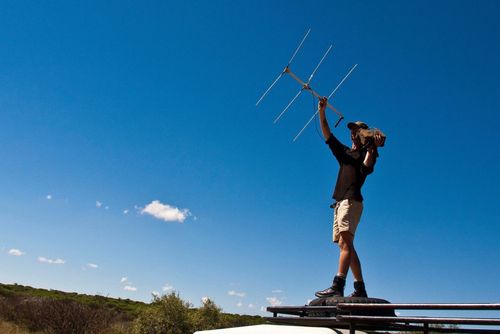The Carnivore Conservation and Research Project in Kanaan gives volunteers the chance to become immersed in important research that is taking place in one of Namibia’s most beautiful locations. On this project you will be helping to record statistical data on the different species resident here, and ultimately contributing to the long-term management of the area.
One of the biggest problems facing the carnivores that live in the area is the threat of human-wildlife conflict. This is something that the project team hope to reduce by researching the movements, kill patterns and population size of the carnivores that many farmers see as threats to their livestock.
The main species that can be found in the region include brown hyena, spotted hyena, cheetah, leopards and a number of other desert-dwelling animals. The research being carried out at this project will help to ensure that these beautiful species will be around for generations to come.
Itinerary
Day 1
After arriving into Windhoek Airport, you will be transferred to your accommodation which will take approximately 45 minutes. Upon arrival you will be given time to settle in and relax before your transfer tomorrow.
Day 2
Today you will transfer to the carnivore research site at Kanaan. This is roughly a 7 hour journey, and after taking in the ever-changing landscape of Namibia, you will be given time to relax and enjoy dinner.
Day 3-15
The next two weeks of your trip will be spent partaking in all of the activities at Kanaan. There is a focus on data recording on the project, and the volunteer team will be helping with radio telemetry, game counts, carnivore feeding and maintenance amongst other activities.
Day 16
Today will be your final day at Kanaan, so after a well-deserved breakfast, you will be transferred back to your overnight accommodation to spend your final evening with other volunteers, swapping stories and photographs.
Day 17
It’s time to head home! After you have said your goodbyes you will be taken back to Windhoek airport to begin the journey home or your onward travel plans.
Activities
Mapping
Volunteers help the project team map out important wildlife observations and habitat features, as well as mapping infrastructures in the region. Once this data is gathered it will be used to process up to date reserve maps which are crucial for conservation efforts.
Capture, Mark, Release
Another activity you could take part in is the capture, collar and releasing of the local species of interest. Volunteers have assisted the team during this process, but please note that this is not a guaranteed activity. The team aims to use a non-intrusive method of research and this will only be done when completely necessary.
Radio Telemetry Tracking
After any animals in this region have been fitted with GPS collars, the team are able to track and observe them. This is a great chance for volunteers to see wild animals in their natural habitat. Please note that the animals are free roaming, therefore, this is not a guaranteed activity.
Game Counts
Game counts are a crucial part of the ecosystem management here. At Kanaan, you will help to record animal age, numbers, and sexes out in the field. You will be helping to answer some intriguing questions during these game counts, the first of which being “Just how does wildlife survive in this harsh environment?”
Camera Trapping
You will be helping to set up the in-country teams "second pair of eyes" all around the site. These cameras record 24/7 and have therefore helped to observe species of wildlife that are often overlooked. Data entry, sorting and analysing are included to process the images collected.
Hiking and Exploring
Exploring the area through hiking, volunteers are able to see and learn about the local flora and fauna with the group and project staff. This is a great opportunity to capture pictures in front of the breath-taking landscape.
Carnivore Feeding
Kanaan is home to two rescued cheetahs from the Namibia Wildlife Sanctuary, that now live in a seven-hectare enclosure in Kanaan. Volunteers will be involved in preparing their food, as well as feeding them and cleaning out their enclosures on a regular basis.
Maintenance and Defencing
For the project to function properly several maintenance activities need to be carried out and as a volunteer, you will be assisting with these. One of these activities includes defencing, this is an important element of work allowing the wildlife the ability to roam freely around the area. You will be helping with a wide range of activities, so be prepared to get your hands dirty!
Sun Downers/ Sunrise Breakfast
Often a volunteer’s favourite activity, sun downers give you the chance to sit back after a hard days volunteering and watch the sun set over the dunes. With such a vivid and unique ecosystem at your fingertips, you won’t want to miss this opportunity! Perhaps you will enjoy a sunrise breakfast followed by awesome sandboarding on the dunes!



